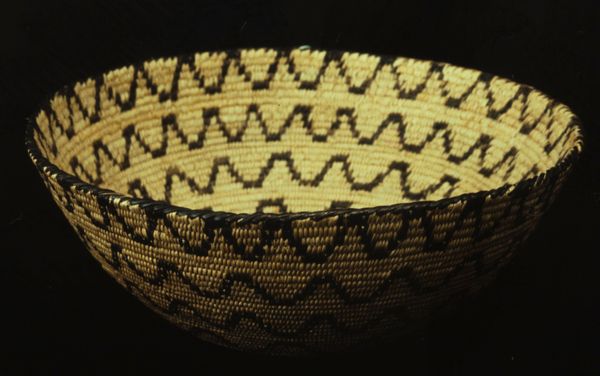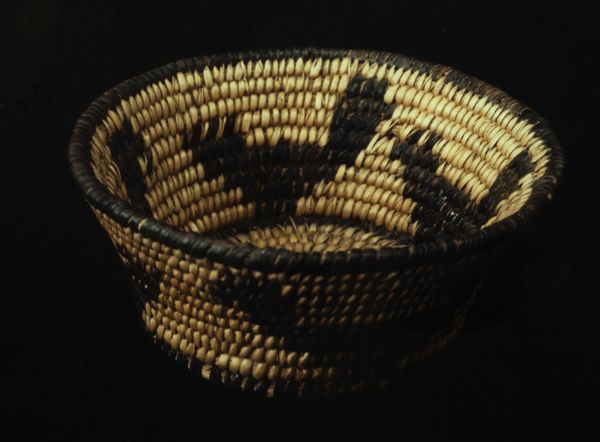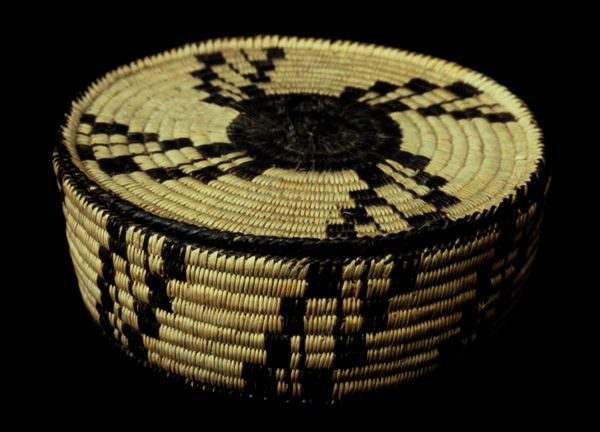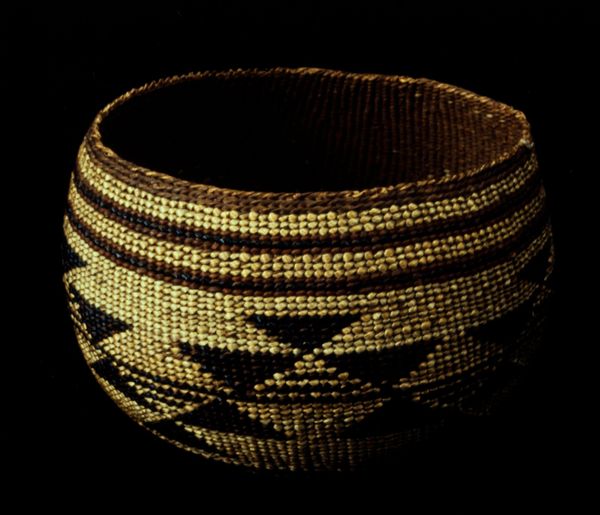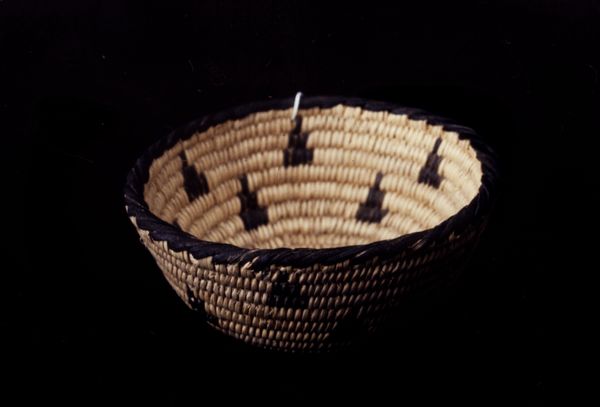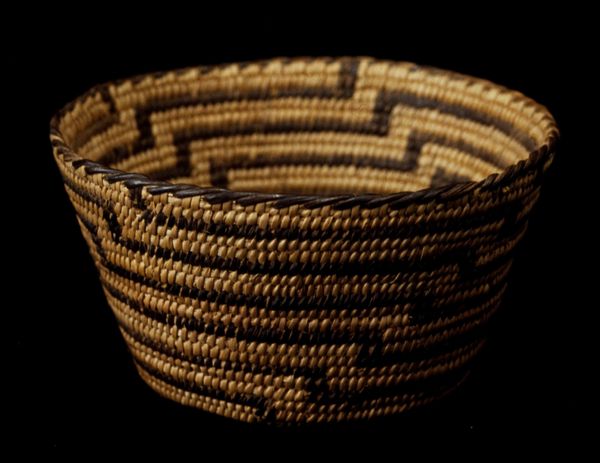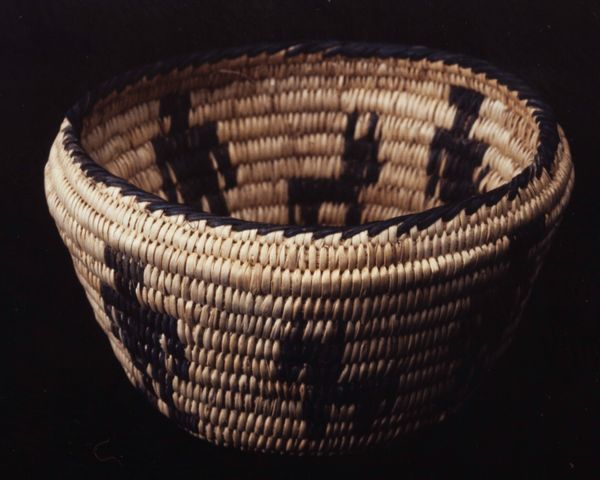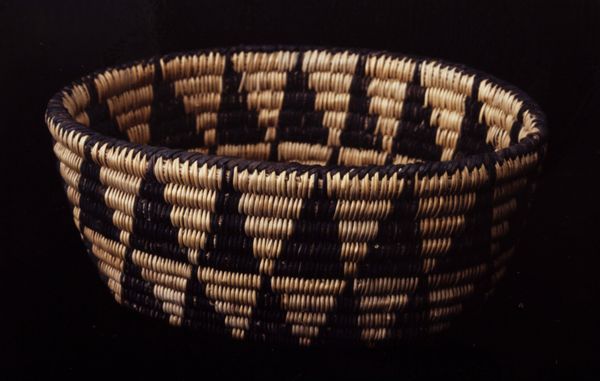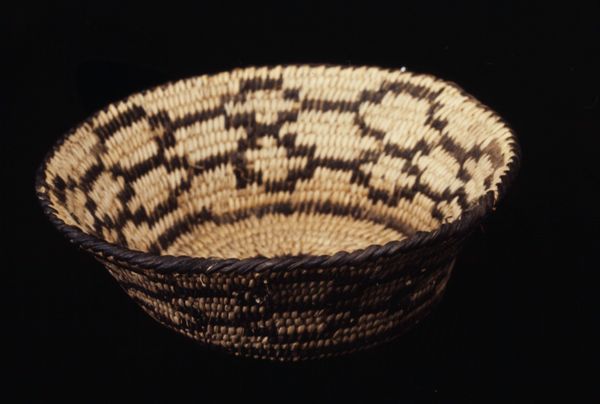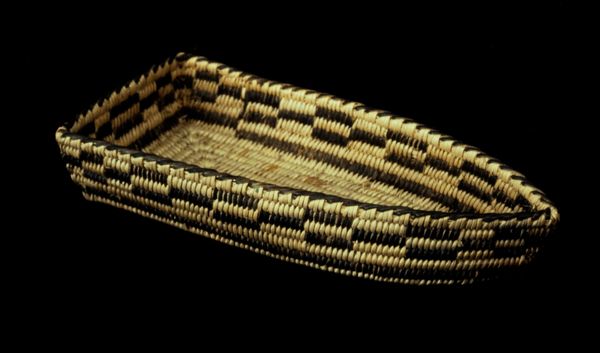
weaving, textile
#
sculpture
#
weaving
#
textile
#
geometric
#
indigenous-americas
Dimensions: 2 x 3 7/8 x 3 7/8 in. (5.1 x 9.8 x 9.8 cm)
Copyright: Public Domain
Editor: Here we have a woven basket by an Indé (Apache) artist, dating from around the 20th century. The geometric patterns woven into it are really striking – I'm curious about the context and history behind a piece like this. What’s significant about this basket to you? Curator: What strikes me is how this object navigates different spheres. On one hand, it's a utilitarian object, reflecting the resourcefulness inherent in Indigenous cultures. But, beyond that, consider how it participates in a visual dialogue. These geometric motifs carry specific meanings. Editor: So, it's not just a pretty pattern? Curator: Not at all! Indigenous art, particularly works like these made for the market, faced an interesting tension. Museums and galleries often favored certain designs. Was the artist making choices based on cultural heritage or to appeal to a specific audience or market demand? Does that affect our viewing of it now? Editor: That makes me think about cultural representation, and who gets to decide what’s valuable or authentic. How does this relate to the reception of Indigenous art more broadly? Curator: The institutional spaces where we display these works influence our perception and understanding of them. Museums become storytellers. Whose story is being amplified? And who is left out? The basket, therefore, transcends its materiality. It opens dialogues about the politics of representation and preservation. Editor: So much more to unpack than I initially realized! Thinking about how cultural contexts shift our perceptions adds so many layers. Curator: Exactly. The more we know about the history surrounding an artwork, the richer our experience becomes.
Comments
No comments
Be the first to comment and join the conversation on the ultimate creative platform.
